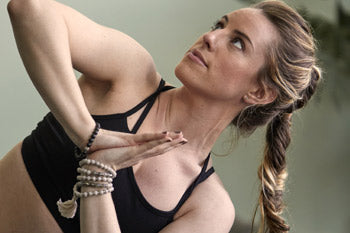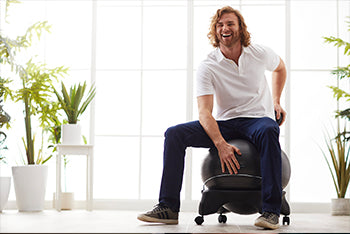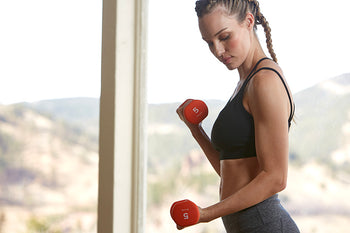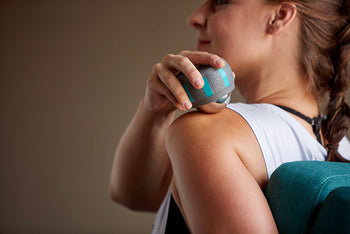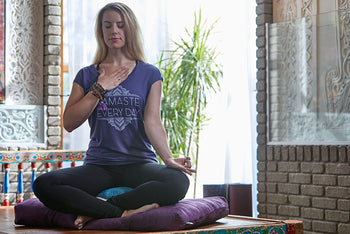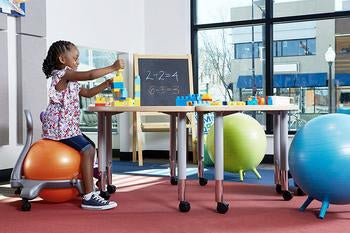How to Position Your Body for Meditation
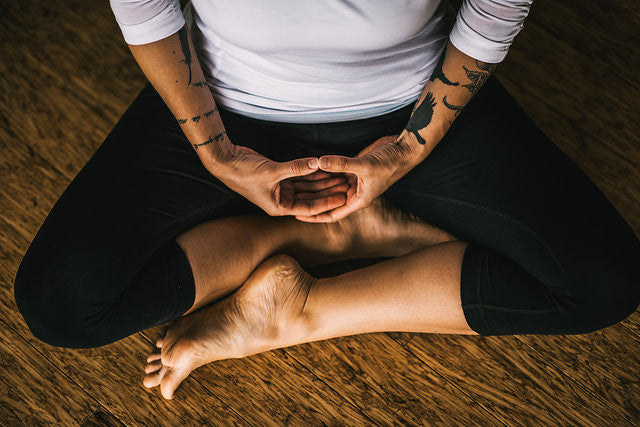
by: Doug Unger & Jessica Springgay
Meditation is the process of guiding your mind toward a state of greater relaxation and awareness. Though meditation is largely mental, physical positioning of the body certainly makes a difference in how effective the meditation will be. There are differing schools of thought on meditative body positioning, called yogasanas, but there are some common and best positions to meditate including instructions that may be useful to you.
Step 1: Eat a simple, light meal an hour or two before meditating
It is very difficult to achieve and sustain good positions to meditate in if the body is too hungry or too full. In his meditative instructions, yoga meditation leader Swami Jnaneshvara Bharati frequently reminds students that food is for our cells, not for us. It’s not about what we want but rather what our bodies need. To prepare yourself for meditation, eat enough to maintain your strength but not so much that your body positioning and breathing will be compromised.
Foods recommended for consumption prior to meditation include vegetables, beans/legumes and brown rice or other whole grains.
Step 2: Select a leg position that allows you to relax
Meditation should not be physically painful. Choose a leg position that is comfortable, whether that is kneeling, legs straight, legs crossed loosely with the bottoms of your feet against your hips or whatever works best for you. You want to select a position that you can stay in for a while, in order to direct your attention elsewhere.
Step 3: Focus on keeping your back straight
Regardless of the leg positioning you prefer, such as lotus posture for yoga meditation, it is very important to keep your back straight, allowing for the natural curvature of your spine. This will maximize your lung capacity and allow you to breathe deeply.
Meditation does not require you to sit on the floor. You can sit in a chair. A straight-back chair is recommended. Laying down or reclining to meditate is not recommended because you may fall asleep.
Step 4: Place your hands where they add focus and do not distract
You may choose to place your hands on your legs or fold them together in a praying position. Either is fine; it depends on what allows you to most effectively center yourself. Your meditation position should enhance your sense of connection with your environment and with the Earth.
Step 5: Close your eyes
This is an important and common meditation instruction because it helps you shut out distractions. As you meditate and your awareness is heightened, you will begin to feel your environment, even though you do not see it.
With just the right amount of healthy food in your system, and having selected a meditative environment and body position that best suits your needs, you are on your way to a meditation session that is relaxing, non-distracting and conducive to your total immersion in the process.
Meditation techniques
If you want more calm and spiritual awareness in your life, you can try one or more of the hundreds of documented meditation techniques. Meditation is one of the best stress relievers, and with all of the stressors of life (job, money, house, car, kids, friends, family), we could all use a little relief. The Meditation Society of America offers a list of 108 different meditation techniques so you can choose the technique that’s right for you. And, by following the steps below, you'll become a master at meditation in no time.
Step 1: Learn the basics
Most meditation techniques focus on bringing your mind serenity, clarity and bliss. You can learn meditation techniques online through guided meditation lessons, with books or videos or by visiting a meditation center. Read on to learn a few techniques yourself such, as Christian and Buddhist meditation, and how to find free meditation techniques.
Step 2: Try Christian meditation
According to All About God, a Christian website, Christian meditation is simply meditation in a Christian context. The goal is to focus on Bible scripture; quiet and clear your mind to open it for God’s inspiration and communication. To do it yourself, the World Community for Christian Meditation suggests you first find a quiet place, then sit still with your back upright. The Community states that you should close your eyes and silently recite your prayer word, or mantra: “Ma-ra-na-tha,” an Aramaic word that the group says means “Come, Lord.” Focus on the sound of the word to keep your mind clear. The Community says you should perform Christian meditation for 30 minutes per day, every morning and evening.
Step 3: Try Buddhist meditation
Buddhist meditation techniques are based on ancient Buddhist texts and are practiced by Buddhists and non-Buddhists alike. Buddhists use meditation techniques as part of the path toward enlightenment and nirvana. You can use Buddhist meditation techniques, like breath meditation and recollections, to develop mindfulness and concentration.
A simple Buddhist breathing meditation, as suggested by How to Meditate, a Buddhist meditation website, involves you sitting in a comfortable position with your eyes partially closed, focused on your breathing. Don’t focus on controlling your breath, but instead focus on the sensation of your breath as you inhale and exhale through your nose. Continue this until you experience a sense of inner peace and relaxation.
Step 4: Try free meditation techniques
You can find free meditation technique diagrams and instructions online or by checking out a meditation book from a library. Many sites also offer free meditation instructional videos or audio downloads. An advantage of trying out free meditation techniques is that you can practice meditation in the comfort of your own home, rather than somewhere like a meditation center, without any pressure or self-consciousness. When you’ve grown more comfortable using the free meditation techniques, you could try more advanced techniques at a monastery, meditation center or retreat.
Also in Blog

Body Peace & Personal Empowerment

Yoga for Swimmers: Poses for Strength and Mobility


